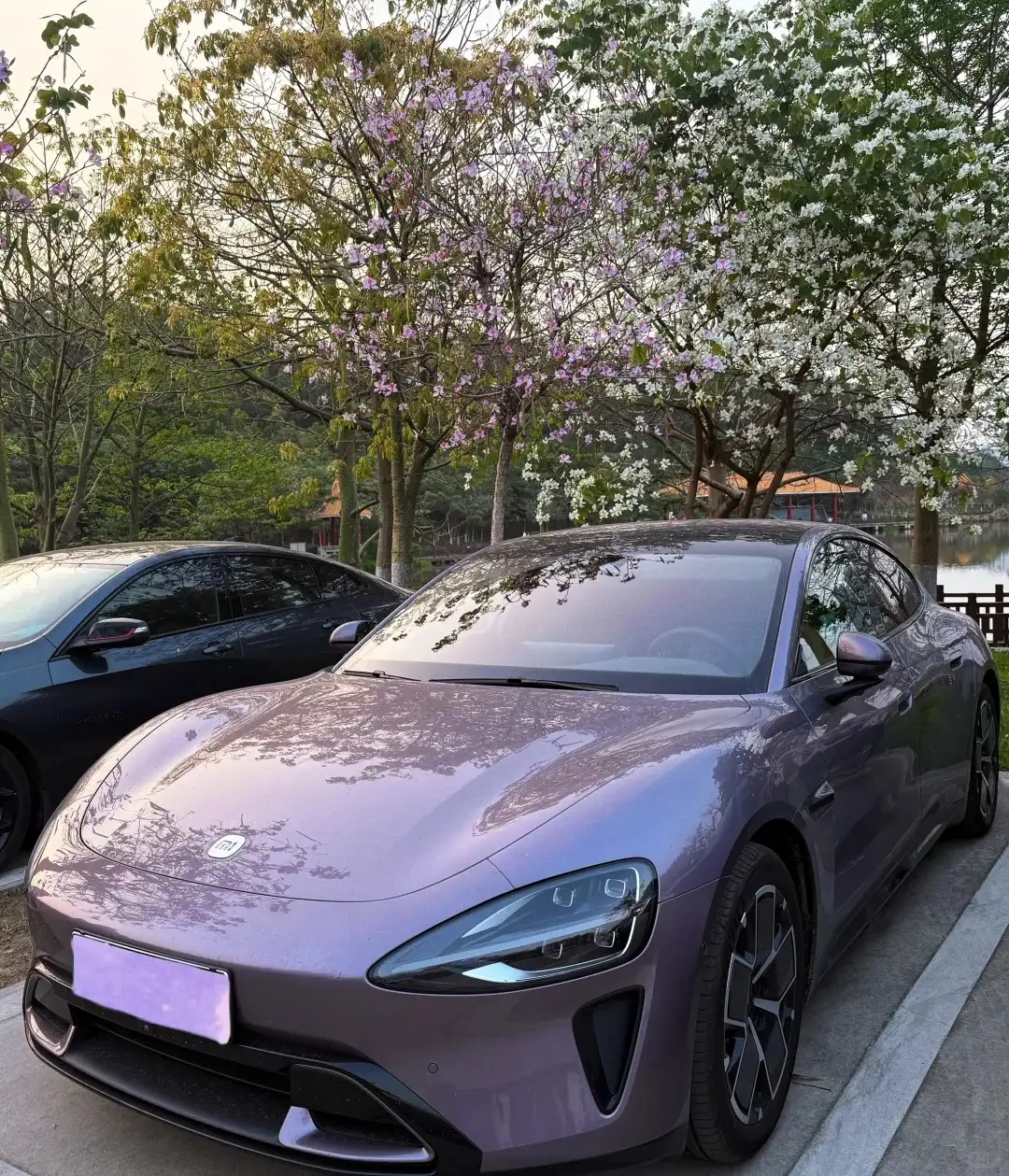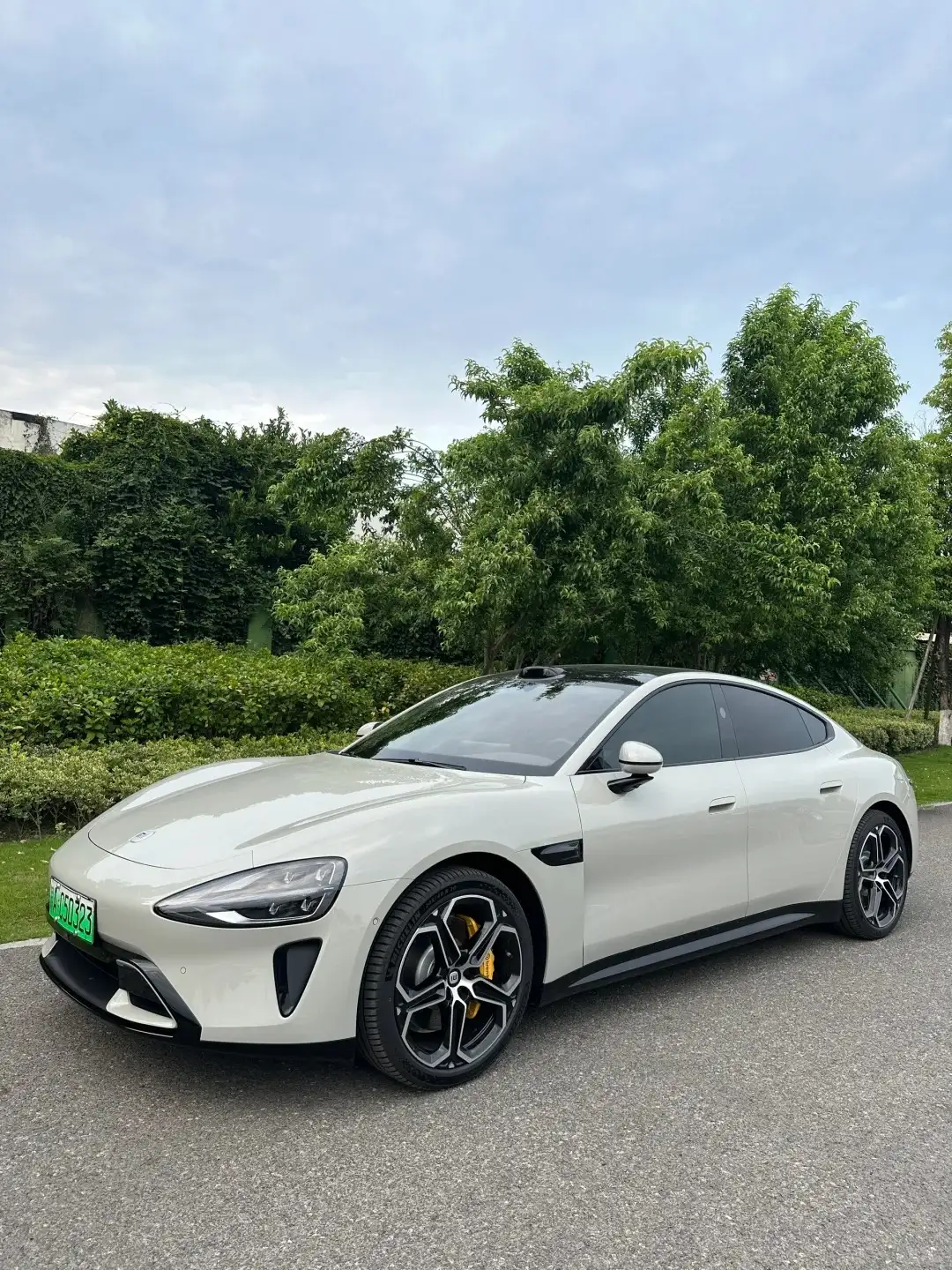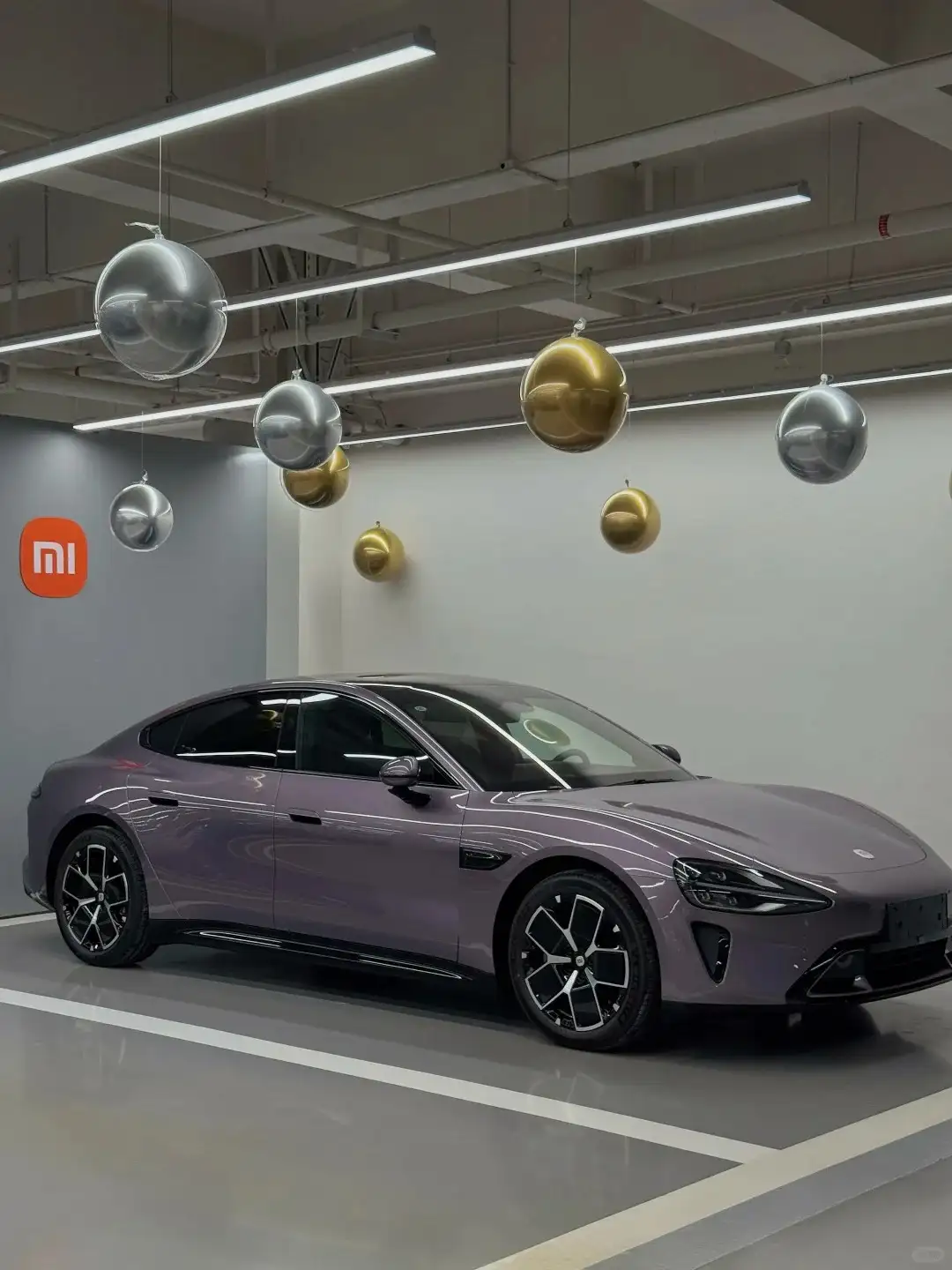1.Range test: I have the standard plum blossom wheels, and when fully charged it shows around 495 km, but in reality, I get about 440 km. Don’t rush to call it inflated—here’s my driving pattern: daily city commutes of about 20 km round trip, weekend highway drives of 100 km round trip + occasional aggressive driving + 200 km of random city cruising. I didn’t enable energy regeneration. I’ll test again later with regeneration turned on. I’ve heard city driving can be almost 1:1, so overall this result isn’t bad.
2.Dashcam incomplete recording: Once a car intentionally cut in front of me and braked hard—I almost rear-ended it. I also braked sharply, but AEB didn’t activate. When I checked the footage afterward, that whole segment was missing. The earlier video wasn’t there either, only a much later part. It completely skipped the incident!
3.Navigation map: When you reach your destination, it doesn’t proactively recommend nearby parking spots. At present, it’s not as feature-rich as a phone. But the traffic light countdown display is nice! Overall operation smoothness + seamless phone-to-car navigation is excellent.
4.Phone navigation sync issue: For example, if I’m already navigating on the car system but then start navigation to a new place on my phone, the car system won’t update automatically. You have to manually exit the current route on the car and reselect from the phone to sync.
5.Turn signal auto-cancel: Not as good as Tesla’s. It only turns off once the whole lane change is complete. But if another car is next to you, it assumes you still want to change lanes again—which can be dangerous.
6.Infotainment home screen widgets: The card widgets on the home screen are inconvenient (and unsafe) to fiddle with while driving. I tried using XiaoAi assistant, but right now it can only display certain cards for you. It cannot enlarge a specific widget (not fullscreen). For example, if QQ Music and Maps are displayed, QQ Music takes up two-thirds of the screen. I hope XiaoAi voice commands can be improved.
7.Turn signal assist camera quality: The side-view assist camera is blurry—nowhere near the quality of the 360-degree view. It looks like 720p quality, which feels outdated in this era. Strangely, night performance is better than daytime, which makes me wonder if it’s not using the main camera. Hopefully OTA updates will improve this, otherwise it’s likely a hardware compromise to cut costs.
8.Infotainment control logic issues: There’s no physical button for music volume adjustment. Tesla has it—you just swipe left or right like for air conditioning. Now, only the driver can adjust via the steering wheel or by calling XiaoAi. The passenger sometimes doesn’t want to call XiaoAi. A dedicated button would be better. AC airflow direction control is also inconvenient—it’s troublesome and unsafe to adjust while driving, and takes extra time. Maybe this is a common EV flaw, but I hope there’s a better solution.
9.Instrument cluster display: I wish the car’s road/navigation info could be projected onto the instrument panel. Looking at the central screen is risky. Currently, it only shows when using assisted driving. If navigation could be mirrored, that would be great—otherwise the instrument screen feels underutilized. Even traditional ICE cars have this feature; it’s a pity EVs don’t.
10.Noise issues: So far, only the wipers make a bit of noise, especially when stopped at traffic lights. No other unusual sounds.





I’ve had the standard version for four months now. The main issues are power and range; everything else is acceptable. The acceleration only gives you that push-back feeling the moment you first step on it, but after that it feels really weak. As for range, on the highway I lost about 140 km after just 40-something km of driving. On national roads, I drove 110 km and the range dropped by 260 km. All real-world tested. Other than that, no major problems.
I’ve got a question: does this car actually have simulated engine sound? Last night inside my neighborhood I came across a slowly moving SU7, and the roar sounded just like a modified fuel car engine. I thought, isn’t this thing fully electric? Even if it’s an EV, that noise definitely didn’t sound like a motor. The only explanation I could think of is that the car has some sort of simulated engine sound feature.
Another awkward (but kinda funny) part was that the owner had the external media speaker on, so everyone outside could hear her phone conversation. Couldn’t help but laugh, hahaha.
Same configuration here — shows 495 km on a full charge, but in reality I feel like it can only do about 400 km.
So far my impression is that everything else is great, but the seats feel a bit hard, and the horn is really difficult to press.
What impresses me most about the Xiaomi SU7 is its design—it looks stylish and modern, and I often notice people turning their heads when I drive by. After about 5,000 km, the car still feels rock-solid. The infotainment is excellent: the screen is sharp, touch response is smooth, and everything loads quickly. In traffic jams, the driver-assist works great, handling stop-and-go situations with ease and reducing a lot of driving fatigue. The sound system is another highlight, with punchy bass and clear treble. Charging is fairly convenient too, with fast charging bringing it up to around 80% in just half an hour. My family loves it as well, especially the roomy and comfortable rear seats. Overall, this has been a very satisfying purchase.
I’ve been driving the Xiaomi SU7 for about two months now, and the first word that comes to mind is “smooth.” Whether it’s acceleration from a stop or braking, everything feels seamless with no abruptness. The voice assistant is super handy—I rarely need to touch the screen while driving since I can control music and navigation with voice commands, which feels much safer. The range is realistic; while it doesn’t hit the advertised 700 km, I consistently get around 480 km in city driving, which is plenty for me. Noise isolation is solid too; on the highway it’s much quieter than gas cars in the same price range. I don’t use driver-assist much, but when I tested adaptive cruise control on the highway, it was steady and reliable. Overall, this car fits my needs perfectly.
I bought the SU7 because I needed a car that works both for daily commuting and weekend trips, and I’ve driven about 4,500 km so far. I have to say the space utilization is excellent—the front and back seats feel roomy, and the trunk can fit plenty of luggage. Driving quality is satisfying too: the steering feels just right, and the car stays stable through corners. Among Chinese EVs, the infotainment system feels top-tier—fast screen response and a very clear, logical layout. Range is basically as expected; with AC on, I get around 480 km in the city, which is more than enough. Fast charging is also quite good, making road trips easy since topping up doesn’t take long. The interior materials feel solid and premium. Overall, the car balances practicality with tech appeal, and I’m really happy with my choice.